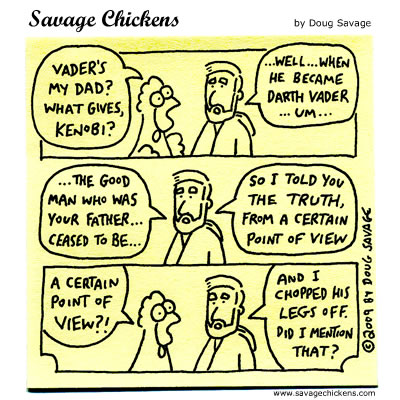Writing Tip: The Power of POV - Choose Wisely
November 2, 2011
Point-of-View - it’s an element of writing that authors are hyper-conscious of, and, if done well, of which the reader is not even aware. First-person or third-person? Omniscient or limited? A single POV or multiple POVs? One POV per chapter or “head-hopping” through the scene? Every story an author writes they must make these decisions, for there isn’t one right answer. There are opinions on what the “correct” way to handle POV is, and some aspects of POV are certainly more suited to one genre than another, but there is no foolproof way to go about it. However, if an author hasn’t mastered whatever POV they have chosen, or selected the wrong one for her story, the novel can swiftly tank.
When I began writing novels, I chose to use an omniscient, third-person, multiple POV. I wasn’t truly conscious of the omniscient part until a contest judge mentioned it to me. My character’s narrative wasn’t immediate enough. I wasn’t firmly in their heads, and I often spoke with an all-knowing, godlike voice about the events happening. My stories did not work with an omniscient voice. And thus began my struggle to become more firmly planted in my character’s heads - to make the reader truly engage with my characters, to feel the immediacy of their thoughts and actions.
 My second, third, and fourth novels were written in limited, third-person, multiple POV. In books two and three, I wrote from many characters’ points of view, while in book four, I restricted myself to just the hero and heroine. In all these stories, the POV worked, but I still wasn’t deep in my character’s heads. I skimmed the surface. The reader was conscious that I was narrating for them, instead of the characters truly speaking for themselves. Sometimes, I got it right, but more often than not, I didn’t.
For my fifth novel, I tried my hand at writing a historical mystery. And with this switch, I also decided to attempt writing in first-person. This often works well in mysteries, limiting the POV to only one person’s observations throughout the story, so I decided it was as good a time to try it as any.
And what a difference it made. With first-person, I felt like I was Lady Darby, that I was writing the thoughts directly from her head. I had needed that switch to fully understand what had been missing in my previous manuscripts. And now that the lesson had finally sunk in, I realized it would be easier to write in third-person with the same immediacy to the characters.
However, I feel comfortable with first-person. It fits me. I like the intimacy it gives me with my main character. And I love the ease it gives me to make the other characters’ words and actions mysterious.
When I first began writing, I never would have thought that first-person would become my POV of choice. There is some stigma against it, and it does limit the scope of the story you are able to tell. But as long as it fits the narrative you have chosen, there is no reason you should not use it.
My advice to new or struggling authors would be not to limit your options when it comes to POV. Try a few of them. You can never know what might truly work best for you without trying them. Trying isn’t buying. So if you attempt, say, multiple POVs or first-person and decide you don’t like it, you can always rewrite the scene.
If you are struggling as I did with shallow narrative, if your POV is not deep enough, try writing a few scenes in first person. See if that makes a difference. Something about the experience of writing “I” instead of “he” or “she” makes it easier to speak from the heart of someone. You can always go back later and change all of your pronouns.
Another common complaint concerning POV is that the author is doing too much “head-hopping,” making it difficult for the reader to keep up or understand exactly who is speaking. This causes frustration and disconnect between the reader and the story – something you definitely do not want. If this is a criticism you often hear about your writing, I recommend limiting yourself. Try writing only one POV per scene, and if you must switch to another’s POV, do so only once or twice, and try marking each instance with a line break. Read the novels of other published authors to see how they do it. I know you may chafe against this restriction, but just try it. As I said before, trying isn’t buying. After allowing a few days or weeks to pass, if you go back and read what you wrote and do not like it you can always change it. However, I suspect you may find that you don’t miss the other POVs, and the narrative runs smoother without them.
Point-of-View seems like such a simple technique, but it certainly isn’t. But with an open mind and some extra practice, you can master it. |